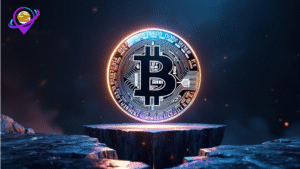Major Buyback Activity Across DeFi Protocols
Hyperliquid, the decentralized exchange for perpetual contracts, has emerged as the most aggressive player in token buybacks this year. According to CoinGecko’s latest report, the HYPE team spent a staggering $644 million repurchasing their own tokens from the open market. That represents nearly half of all buyback activity recorded between January and October 2025.
I find it interesting how concentrated this activity has become. When you look at the numbers, just a handful of projects are responsible for the majority of these purchases. It makes me wonder if we’re seeing a new trend in how DeFi protocols manage their token economics.
LayerZero and Pump.fun Follow Closely
LayerZero, the cross-chain communication protocol, comes in second with over $150 million in buybacks following their highly anticipated airdrop. The timing here seems strategic – after distributing tokens to the community, they’re now buying back significant amounts.
Pump.fun, the meme coin launch platform on Solana, has been equally active. They’ve repurchased 3% of their total PUMP token supply, spending $138 million this year. For a platform that’s all about launching new tokens, this level of buyback activity is quite substantial.
Supply Reduction and Community Benefits
What stands out to me is GMX’s approach. Despite being only the 11th largest buyback project by volume, they’ve managed to repurchase 13% of their circulating supply. That’s a much higher percentage than most other projects. Even more interesting is that they redistributed a significant portion of these tokens back to their community.
Raydium and Jupiter, two major Solana DEXes, have also been active participants, collectively spending over $160 million on buybacks. It seems like decentralized exchanges across different chains are adopting similar strategies.
The Strategy Behind Buybacks
These buyback programs serve multiple purposes. They reduce selling pressure by taking tokens off the market, which can help stabilize or increase prices. When teams and founders personally participate in buybacks, it signals confidence in their project’s long-term value.
The ENA token from Ethena provides a recent example. After founder Guy Young purchased $25 million worth of ENA on the open market, the token outperformed all other top 100 altcoins. That kind of market reaction shows how powerful these signals can be.
From what I can tell, buybacks are becoming a standard tool in the DeFi playbook. They reduce circulating supply, making tokens scarcer, while also demonstrating commitment from project teams. Whether this becomes a sustainable long-term strategy or just a temporary trend remains to be seen. But with $1.4 billion already spent this year, it’s clearly a significant force in the current market landscape.






